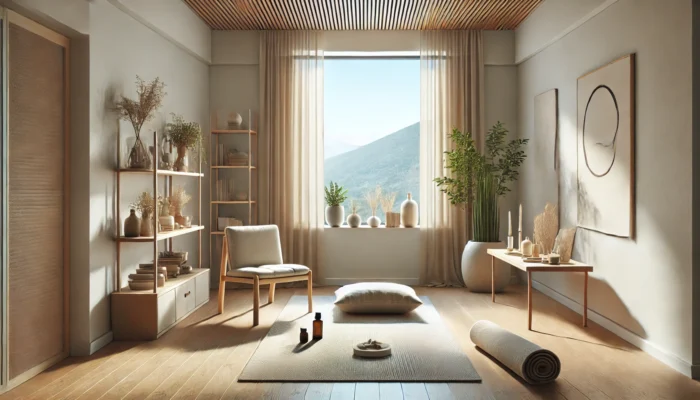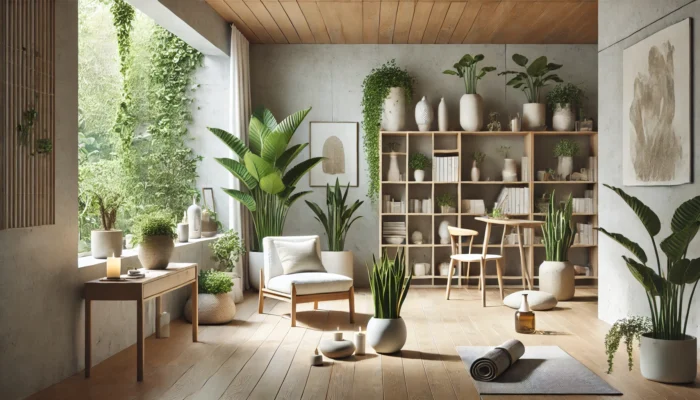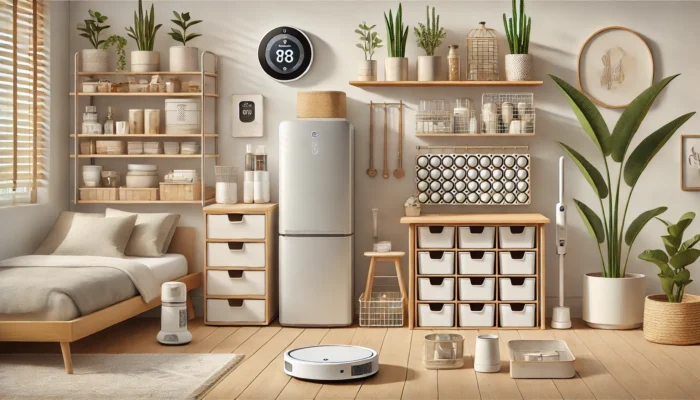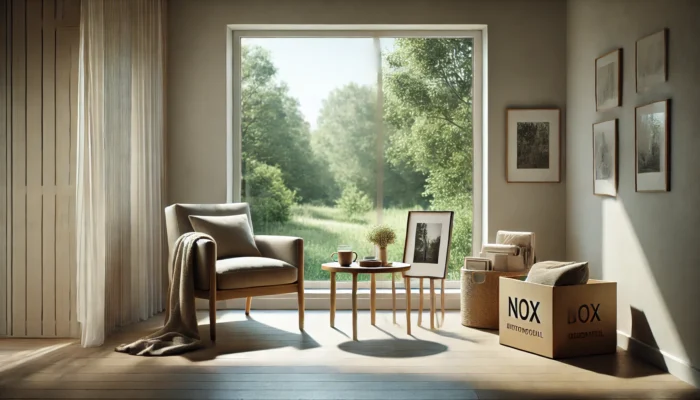In a world that often feels like an endless whirlwind of responsibilities, distractions, and decisions, achieving a sense of balance can seem elusive. From juggling work deadlines to maintaining a household, the constant pressure to stay on top of everything leaves many feeling mentally drained and overwhelmed. This relentless pace has sparked a growing desire for a simpler, calmer, and more intentional way of living.
The answer may not lie in adding more to your life but in removing what complicates it. Minimalist wellness offers a refreshing approach to refocusing your priorities, decluttering your environment, and fostering mental health through intentional simplicity.
In this post, we’ll uncover practical strategies for achieving balance with minimalist wellness and practical tools for stress-free living and creating balance by transforming your home into a serene sanctuary, embracing innovative tools like the rolling egg storage for enhanced organisation, and adopting sustainable minimalist living practices. These steps are designed to help you reduce stress, boost mental clarity, and cultivate a more harmonious lifestyle.
For more insights on minimalist wellness and its benefits for mental and physical health, you can read our article on Balancing Mental and Physical Health.
Let’s explore how simplifying your surroundings can create clarity and peace—one intentional choice at a time.
The Core Principles of Minimalist Wellness
Minimalist wellness is built on a foundation of intentional living, simplicity, and prioritisation. For example, this can mean starting your day with five minutes of mindfulness to set a focused tone or decluttering one room at a time to reduce visual and mental distractions. These small, intentional choices pave the way for a more balanced and enriching daily life. At its core, it’s about reducing mental and physical clutter to focus on what truly matters.

1. Declutter with Purpose
Start by identifying items in your home that no longer serve you. For instance, unused gadgets or duplicate kitchenware can be donated or recycled. A clutter-free space fosters mental clarity and reduces stress.
2. Prioritise Mindful Practices
Incorporate daily habits like meditation or journaling to centre your thoughts. Even five minutes of mindfulness each day can significantly improve mental health and create a sense of calm amidst life’s chaos.
3. Embrace Sustainable Choices
Sustainable living goes hand-in-hand with minimalism. Opt for reusable products, energy-efficient appliances, and locally sourced items. Not only does this align with minimalist values, but it also supports long-term environmental health.
Focusing on these principles can help you create a simpler, more sustainable, and deeply enriching lifestyle. Minimalist wellness isn’t about depriving yourself; it’s about making space for what truly adds value to your life.
Transforming Your Home for Wellness and Balance
Your home should be a reflection of peace and harmony, a space where you can retreat and recharge. To create such an environment, consider these actionable steps:

1. Optimise Space with Intentional Design
Begin by arranging furniture and decor to encourage openness and functionality. For example, use multi-purpose furniture like a storage ottoman to reduce clutter while adding practicality. Studies show that decluttered spaces can enhance focus and productivity, reducing stress levels.
2. Incorporate Natural Elements
Bring nature indoors with plants that not only purify the air but also promote a sense of calm. For example, peace lilies and snake plants are excellent for improving air quality, while lavender and jasmine are known to reduce stress and promote relaxation. Biophilic design, which integrates natural materials like wood or stone, has been proven to reduce stress and improve cognitive function. A small herb garden on your windowsill can also provide a therapeutic touch while supporting sustainable minimalist living.
3. Create Relaxation Zones
Dedicate specific areas in your home for relaxation, such as a reading nook or a yoga corner. Incorporating natural light and comfortable furniture in these spaces fosters mindfulness and supports mental health. Research indicates that exposure to natural elements in home design can significantly reduce stress levels.
4. Simplify with Innovative Tools
Streamline daily tasks with tools that combine functionality and simplicity. Evaluate these tools by considering factors like durability, ease of use, and their potential to reduce time spent on repetitive tasks. Smart home devices like automated lighting or temperature controls can simplify routines while maintaining a minimalist aesthetic. Organised and efficient systems can also reduce mental clutter and improve overall well-being.
By implementing these changes, your home can become a sanctuary that nurtures both your mental well-being and your commitment to a minimalist lifestyle. Transforming your living space is not about perfection but about curating an environment that supports your journey to wellness and balance.
Practical Tools for Stress-Free Living
Practical tools can simplify everyday life, creating a sense of order and reducing mental overload. Incorporating these tools into your routine ensures you focus on what truly matters while enjoying a clutter-free, stress-free living space.

1. Smart Storage Solutions
Innovative storage tools like the rolling egg storage help organise your kitchen while conserving space and eliminating waste. Similarly, stackable bins or under-bed storage containers can keep rarely used items out of sight, leaving your living areas clean and serene.
2. Automation for Efficiency
Smart home devices like automated lighting, thermostats, or robot vacuum cleaners streamline household chores. For example, a smart thermostat learns your preferences, optimising your home’s temperature and reducing energy waste. These tools align with sustainable minimalist living while saving time and effort.
3. Time-Saving Gadgets
Multi-functional appliances, such as an air fryer with built-in dehydrator functionality, reduce the need for multiple devices, clearing counter space. These tools not only simplify cooking but also reduce decision fatigue when navigating the kitchen.
4. Minimalist Wellness Accessories
Incorporate tools that enhance mindfulness, such as a compact meditation cushion or a portable aromatherapy diffuser. These accessories are easy to store and foster mental health by promoting relaxation and focus.
By leveraging these practical tools, you can create an environment that supports minimalist wellness. Each tool serves a purpose, helping you simplify your daily life while fostering balance and peace of mind.
Overcoming Challenges in the Minimalist Journey
Embarking on a minimalist journey isn’t without its hurdles. Emotional attachments, fear of letting go, and societal pressure to accumulate can make the process challenging. However, with the right mindset and strategies, these obstacles can be overcome.

1. Confront Emotional Attachments
Letting go of items tied to memories can be difficult. For instance, one person shared their success by starting with less significant sentimental items, like old postcards or trinkets, gradually building the confidence to tackle larger, more emotional belongings.
This incremental approach allows you to process emotions while making meaningful progress. Start small by choosing a single area to declutter, such as a drawer or shelf. Reflect on whether an item serves a current purpose or merely represents a past moment. Digitising sentimental items, such as photographs, is a great way to preserve memories without physical clutter.
2. Manage Perfectionism
Minimalism isn’t about achieving a perfect home or life, it’s about creating space for what matters. Embrace the imperfections in your journey. Set achievable goals, like decluttering one room per month, and celebrate progress rather than striving for an unattainable ideal.
3. Address External Pressures
Societal expectations to own more can be overwhelming. Shift your mindset by focusing on quality over quantity. Invest in versatile, durable items that align with your minimalist values, such as multi-purpose furniture or sustainable products.
4. Stay Motivated with a Vision
Define your “why” for pursuing minimalism. Whether it’s reducing stress, saving money, or improving mental health, a clear purpose will keep you motivated. Visualise the benefits of a calm, organised space and a life centred around your values, and remind yourself of this goal when challenges arise.
Overcoming these challenges requires patience and persistence, but the rewards including a simpler, more intentional life, are well worth the effort. Minimalism isn’t about perfection; it’s about progress and aligning your environment with your priorities.
Frequently Asked Questions (FAQ)
1. What are the core principles of minimalist wellness?
Minimalist wellness focuses on intentional living, simplicity, and prioritisation. This means reducing physical and mental clutter, practising mindfulness through habits like journaling or meditation, and embracing sustainable choices like reusable products and energy-efficient tools. These principles help create a balanced and enriching lifestyle.
2. How can I transform my home for better wellness and balance?
Transforming your home involves:
- Optimising space: Use multi-purpose furniture and arrange decor for functionality and openness.
- Adding natural elements: Incorporate plants, natural materials like wood, or a small herb garden.
- Creating relaxation zones: Dedicate specific spaces for yoga, reading, or quiet reflection with calming elements.
- Simplifying with tools: Use practical items like rolling egg storage or automated lighting systems to reduce clutter and enhance functionality.
3. What are some practical tools for stress-free living?
- Smart storage solutions: Rolling egg storage, stackable bins, and under-bed containers.
- Automation tools: Smart thermostats and robotic vacuums for efficiency.
- Time-saving gadgets: Multi-functional appliances like air fryers.
- Wellness accessories: Aromatherapy diffusers and meditation cushions. These tools reduce daily stress and help maintain an organised, minimalist lifestyle.
4. What challenges might I face in a minimalist journey and how do I overcome them?
- Emotional attachments: Start small and digitise sentimental items.
- Perfectionism: Focus on progress, not perfection. Set achievable goals like decluttering one room at a time.
- Societal pressures: Prioritise quality over quantity and invest in durable, multi-functional items.
- Motivation: Define your “why” and visualise the benefits of a minimalist lifestyle to stay on track.
5. How can minimalist wellness impact mental health?
Minimalist wellness reduces stress by creating physical and mental clarity. A decluttered space fosters focus and relaxation. Mindful practices like journaling or meditation improve emotional well-being, while sustainable choices support a sense of purpose and connection.
Embrace Simplicity, Find Your Balance
Minimalism is more than a lifestyle; it’s a pathway to clarity, balance, and intentional living. It empowers you to declutter both your physical space and mental focus, enabling a calmer, more intentional approach to everyday life. Whether it’s simplifying your home or incorporating mindfulness into your routine.
As you simplify your environment and focus on what truly matters, you’ll find yourself equipped to handle life’s complexities with ease. Take that first step today, declutter one drawer, invest in a practical tool, or create a relaxation corner in your home. Small, meaningful actions can lead to profound transformations. Start your journey now, and experience the peace and harmony minimalist wellness can bring to your life.

